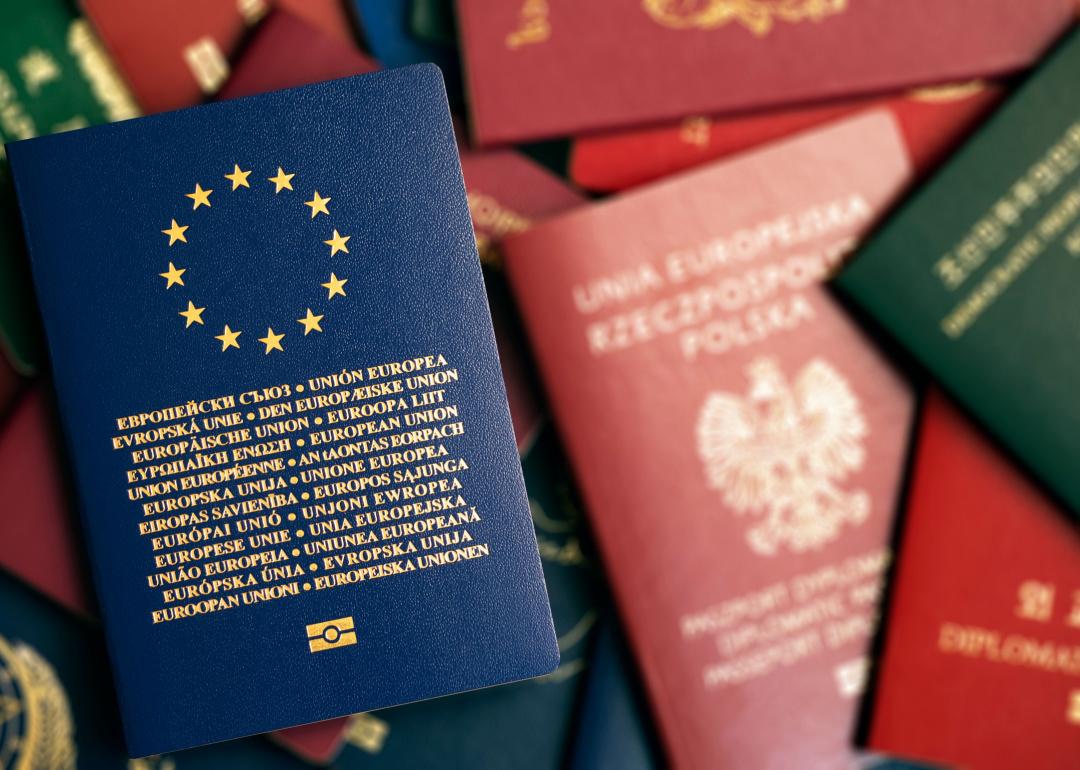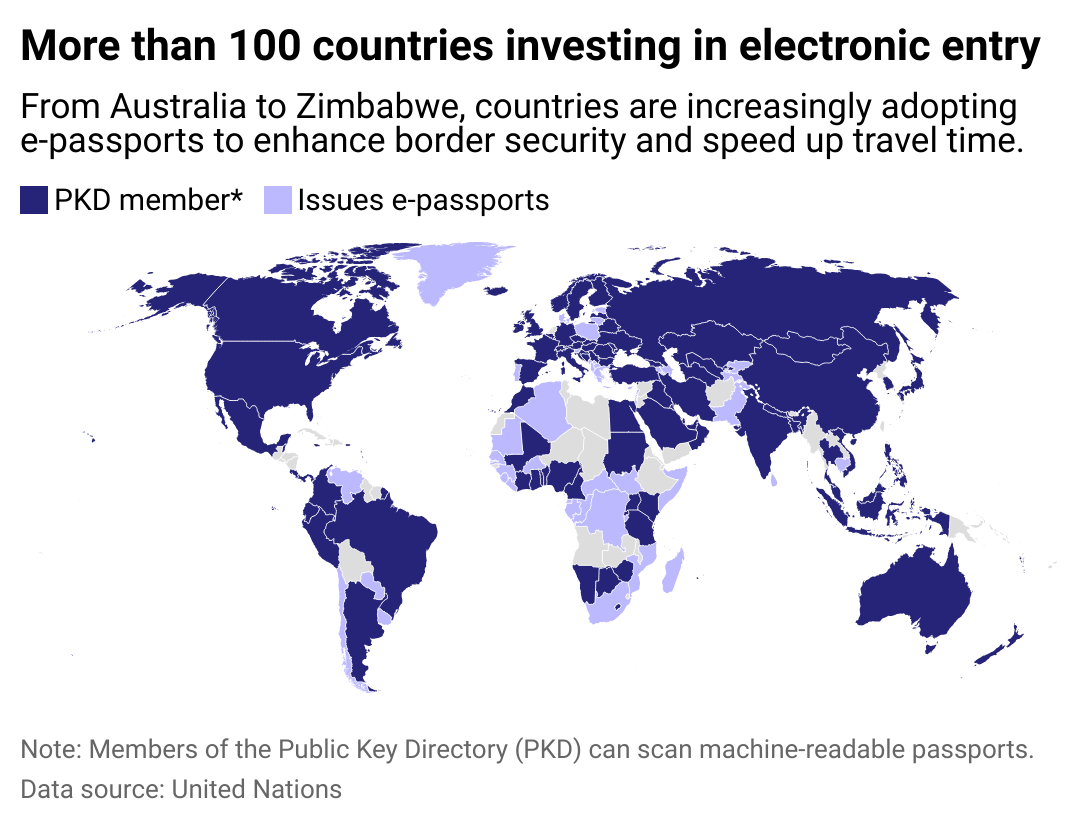
Countries that issue e-passports
This story originally appeared on Spokeo and was produced and distributed in partnership with Stacker Studio.
Countries that issue e-passports
Roughly 140 countries around the world, including the United States, issue electronic passports to citizens traveling and living abroad.
An e-passport is a traditional passport with an electronic chip embedded in it. The radio frequency identification, or RFID, chip contains the passport holder's biographical information: a digital photograph; a biometric identifier, such as a fingerprint; and a unique, country-specific digital signature.
The market for global e-passports, mostly driven by the increasing costs of related technology and infrastructure paid by public and private entities like airports and airline firms, was valued at approximately $28.8 billion in 2022. This figure is set to hit $256.2 billion in 2032 as more countries adopt the technology to combat identity theft and digitize airports.
Spokeo compiled information from the United Nations' International Civil Aviation Organization, the Department of Homeland Security, and other sources to see which countries already issue e-passports and what the future of travel looks like.
In the U.S., e-passports issued to citizens are designed to protect holder privacy through security features aimed at preventing unauthorized persons from reading the data on the passport chip, according to the DHS.
Because the chip in the passport must have authentication from public key infrastructure, forgery would be an expensive and complex process. Border agents can detect forged passports, as long as they meticulously follow all security protocols, according to Simply Flying.

History of e-passports
Before e-passports were first introduced, passports came with risks of identity theft and document falsification. To combat these risks, the ICAO laid out the first guidelines for implementing electronic passports in 1988, followed by standards for a machine-readable format to be used for travel documents, adopted in 2003. Malaysia was the first country to use e-passports in 1998. In 2006, the U.S. began issuing e-passports, joining over 60 countries providing such passports for their citizens.
As e-passports became more common, the issue of establishing a trustworthy system to efficiently match authentication requests by border-control personnel with country-issued certificates for e-passports arose, a gap now filled by ICAO's Public Key Directory. Countries participating in the PKD program can upload and download authentication certificates and revocation lists.
Ninety-four countries and territories currently participate in the PKD program as of January 2024. In 2023, Costa Rica, Jamaica, Namibia, and Bermuda became the most recent to join. The first members to participate in the PKD program in 2007 were Australia, New Zealand, Singapore, the United Kingdom, Japan, Canada, the U.S., and Germany.

Benefits and criticisms
According to Aratek, a leader in biometric products, the benefits of e-passports to holders and border control personnel are fourfold. First, these passports protect holders against identity theft because they are more difficult to forge. Second, e-passports can make checking in easier, allowing officials to verify travel documents quickly. Third, by being identifiable by systems like PKD, e-passports can help law enforcement at airports identify threats to national security. Lastly, as airports implement e-gates and other automations, an e-passport can help holders breeze through long lines.
There are, however, a few downsides to the technology to consider. Rights groups such as the American Civil Liberties Union have criticized the technology for its vulnerability to hacking, eavesdropping, and cloning. Furthermore, because e-passports rely on technology, should readers and e-gates malfunction, e-passports can lose their edge over traditional passports. Lastly, since e-passports and their authentication rely on complex infrastructure, the technology is costly for some governments to implement and maintain.
According to a 2022 article from the New York Times, facial recognition software may replace e-passports in the future, verifying faces electronically instead of by visual comparison from border control agents. Only time will tell if technological developments such as this will eventually render e-passports a relic of the past.
Story editing by Shannon Luders-Manuel. Copy editing by Tim Bruns.



